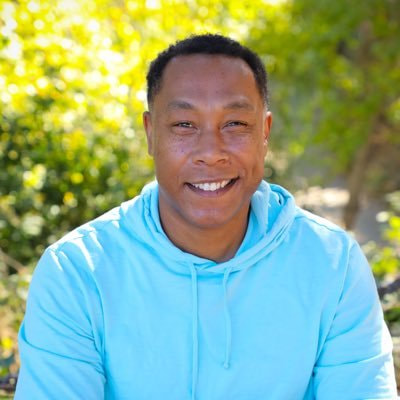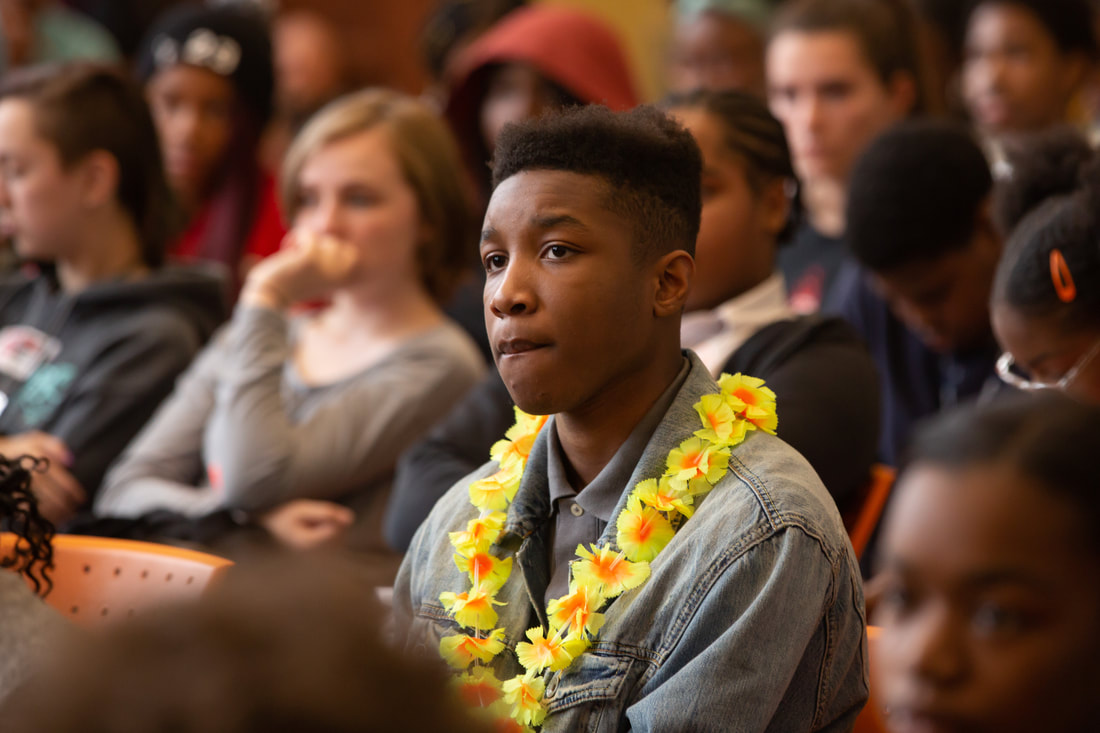Their conversation has been edited for length and clarity.
After I appeared on your podcast, I realized you’ve made a profound practice of listening to other people. You extend your platform to others and learn cooperatively through conversation. Skilled listening is, I think, core to how James Baldwin operated and definitely central to what we try to encourage through the Baldwin Prize. So I wanted Baldwin Prize students to hear about you and that practice.
I think you're spot on. I also think there are pillars to what you just described. For example, asking questions—that’s both a skillset and an art.
Let me unpack it this way. I think a superpower everybody can tap into is consistency. No matter what you do, if you're consistent, you will see results. I think we sometimes can view it as, “Oh, I need to be the most well written, or I need to be the greatest artist or the greatest speaker.” But the only way you get to that level is through consistency. The more you do it, the more you get to that elite status.
I would just offer one tiny tweak there. I think consistency with thoughtfulness can yield great results, because it is possible to consistently do the wrong things.
Yes, I agree. That’s a great addition. It’s consistency with focus and intentionality.
The second piece is curiosity. I'm just a curious person. I always say, “Tell me why you did this” or “What happened when you did that?” I see it as a type of life hack, because I can ask you, “What was going to Johns Hopkins like?” And I can actually learn from your experience on that campus even if I’ve never been there. I've seen that most people that tend to be both successful but also flexible tend to have that curiosity.
The last piece is being a creator, not in the trendy sense of going on TikTok and making dance videos. But building, creating, making something puts you in the act of action, which I think we just all benefit from. So the podcast is a thing I create. I have to find the right interviewee, talk to him or her, edit the conversation, do all those things. I'm always in the activity of building, and that also is one way that I learn.
I love those pillars. You just gave a master lesson on craft. How did you become the person who operates that way, who brings that kind of consistency and curiosity to everything?
This may sound extreme, but trauma and the things that we struggled through tend to be what yield our abilities. I was originally born in Detroit. Then we moved to Indiana when I was going into third grade. So there was a transition of going from a place where my community looked like me to a place where I was one of the few who looked like me.
Because I physically stood out, I did whatever was possible to try to fit in. I portrayed what I saw or what I thought would allow me to fit in. During my entry into the workforce I did the same thing. I looked around and thought, “Who's the most successful person in the room? Act like him.” And that tended to be a white male. What I found was that I could actually get pretty good at that, but I realized if I continued to do that, I would never operate at my ultimate capabilities.
My first opportunity to move into what I would say was a jumping-off point for what I was supposed to do was joining an agency that helped companies figure out how to get into video games as an advertising platform. I was going into such a non-traditional place that it gave me the space to show up as my authentic self. I also was surrounded by the most diverse group of people that I'd ever worked with. I actually knew about that stuff because I was playing video games, and I was buying sneakers on the weekend. It allowed me to not separate who the Saturday Matt was from the Monday Matt. And that set me apart—this time in a good way.
You are a master communicator. Could you talk a bit about some of the non-obvious ways in which your ability to speak with people and/or write have been beneficial?
It's funny, because growing up, my least favorite subjects were English and literature. Some of that was self-fulfilling, because I told myself I wasn't a writer or good at reading, and I pushed into math and the sciences. Throughout my entire university experience, I might have taken one or two literature courses. What I found as I got older is when it comes to digesting and consuming information, reading is the easiest way to learn from someone that you may never meet.
And whether it's fiction or nonfiction, being able to go into a world where you can immerse yourself, take information, and store it is immensely valuable. As an engineer, the way my brain works is by connecting dots. I used to write computer code. I transitioned that into becoming a marketer where I'm looking at behaviors and determining how I can influence those behaviors. I need information. I need contextual cues about what's happening in the world. I have to be able to communicate the idea and the opportunity. One of my superpowers is being able to take very complex things and simplify them. To me, that's effective communication. That could be the spoken word, the written word, even emojis. The real question is: How do you connect with another person in a way that can help them understand the topic?
One thing I try to get across to the high school students I work with is that they have no appreciation for how much older people really want to help them, how invested we are in their success even if we've never met them. You speak with and help a lot of younger people. Why do you care, and what do you want to convey?
We are the future ancestors. Thinking about James Baldwin and many other luminaries of the Harlem Renaissance and other moments--the investments they made in their community, which we, you and I, are benefiting from. It is my responsibility to make an investment. There’s a phrase: I'm planting seeds that will grow into trees that I'll never see the shade of. To me, that's the responsibility we have, because we're standing on the shoulders of those ancestors. The only thing we can do is pay it forward and help someone do something faster, bigger, broader, more easily than we did.
I tell young people I can only help them, if they know what they need help with. Being able to vocalize where you want to go and what you want to do, that's how you unlock that help.












 RSS Feed
RSS Feed